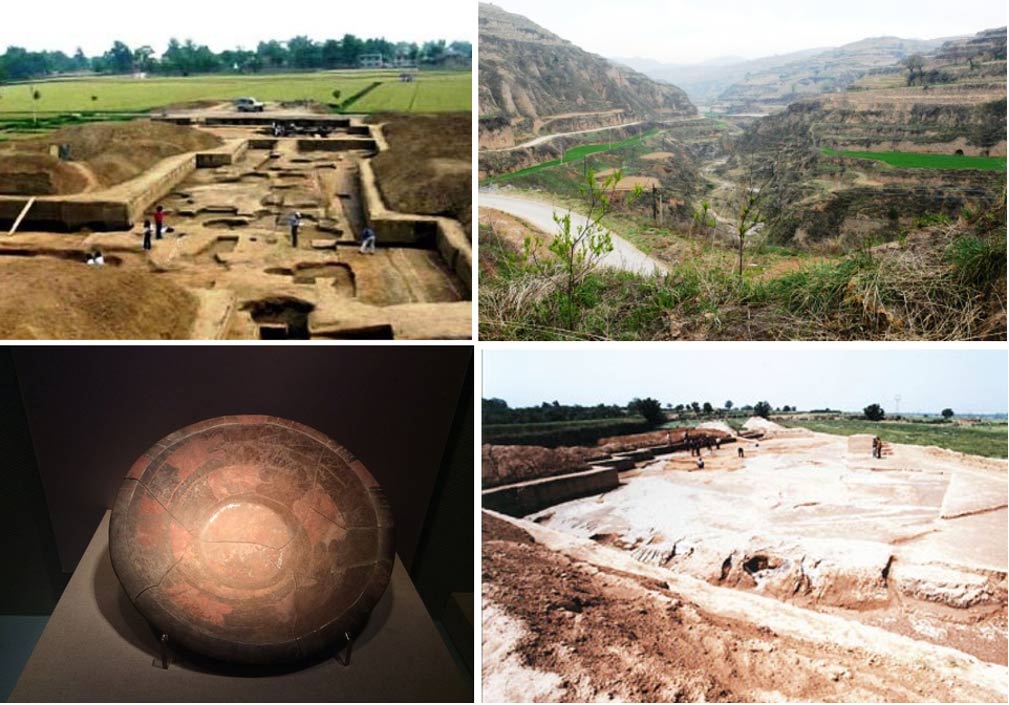Taosi Confirmed as 4,200-Year-Old Legendary Capital of Chinese Hero Emperor
Chinese archaeologists say they have confirmed the ancient capital of legendary emperor Yao Tangdi, who lived 4,200 years ago and who is said to have brought peace and “illumined the people.” Yao has been considered mythical by some, but the Chinese government says this perfect ruler was real, not mythical. The archaeological site of Taosi in Shanxi, China, has now been identified as the ancient capital, known as Pingyang.
"The archaeological circle has reached a consensus that Taosi is the capital of the period of Yao," said Wang Wei, chief of archaeology with the Chinese Academy of Social Sciences. Excavations began there in 1978.

Taosi, the ancient city that scholars say was founded by Emperor Yao Tangdi (Cultural China photo)
"Taosi is what some historical materials identify as Pingyang, the capital of the Yao regime," said He Nu, a scholar with the Chinese Academy of Social Sciences. "The era of Yao and the succeeding emperors Shun and Yu are not legend. They are true history."
Yao’s temple and mausoleum are also in Taosi, which was also known as Pingyang but is now called Linfen City.
Yao’s rule was said to be so good that nature became resplendent.
Confucius spoke highly of Yao, saying he was virtuous, righteous and generous. Britannica.com says:
Legends recount that after 70 years of Yao’s rule, the sun and moon were as resplendent as jewels, the five planets shone like strung pearls, phoenixes nested in the palace courtyards, crystal springs flowed from the hills, pearl grass covered the countryside, rice crops were plentiful, two unicorns (omens of prosperity) appeared in the capital at Pingyang, and the wondrous calendar bean made its appearance, producing one pod each day for half a month before the 15 pods withered one by one on successive days.

Portrait of legendary Emperor Yao as imagined by the Song Dynasty painter Ma Lin (Wikimedia Commons)
Yao’s name is often linked to his successor, Shun, a peasant whom Yao elected to elevate to emperor over his son because Shun was more worthy. Yao also gave two of his daughters in marriage to Shun.
Both Yao and Shun have been lionized through history as benevolent rulers, and wonderful natural phenomena were attributed to Shun’s virtuous rule too.
The blogger and amateur historian Cloud Chronicler identifies seven ancient heroes of the Chinese people, including Yao, Shun and Shun’s successor Yu. Two earlier culture heroes were Fuxi, who taught the Chinese to domesticate animals and devised the eight trigrams of the divination book the I Ching, or Book of Changes; and Shen Nong or Divine Farmer, who invented the plough and hoe and taught the people agriculture.
Two emperors preceded Yao, Shun and the virtuous Yu. One was Huangdi, or the Yellow Emperor, whom Cloud Chronicler calls “the founding ruler and primordial ancestor of the Chinese.” He is said to be the ancestor of Yao. There had been chaos in China until Huangdi raised an army and conquered the petty lords, then secured the Yellow River region. According to legend, he invented writing, boats, carts, the bow and arrow, ceramics, and his wife invented silk.

Magpies and Hare, by Cui Bai of the 10 th century AD; according to legend, an ancestor of Emperor Yao invented silk. (Wikimedia Commons)
“Of [Huangdi’s] successor, Zhuan Xu, little can be said except that he invented the patriarchal family institution, forbade close-kin marriages, and passed the mantel of leadership to Yao,” Cloud Chronicler writes.
Historians of ancient China say Yao lived in Hebei Province but later went south and established Pingyang or Taosi as capital.
Xinhua, the Chinese news agency, says recent excavations reveal the ancient city of Taosi was about 2.8 million square meters (691 acres) and had functional divisions.
The Chinese Archaeology blog says archaeologists at Taosi excavated a palace, an astronomical observatory and domiciles of elites and common people and a cemetery for elites. The discoveries there prompted scholars to establish the name Taosi Culture, which they dated from 4300 to 3900 BC. Wonderful objects were found, including a ceramic plate with a painted dragon, ceramic drums, crocodile-skin drums, jade and stone axes, ceremonial wooden wares and chime stones.
Featured image: Images of the Taosi site in China (marquemywords.co.uk), as well as a painted plate with dragon design found at the site (Wikimedia commons).
By Mark Miller



















